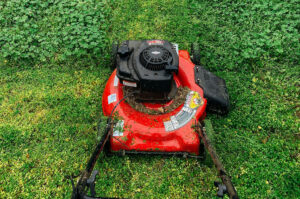Your robotic lawn mower should ideally operate on a regular basis, mowing at least once a day or every other day. Research from the German Lawn Society supports this routine, showing that such a mowing frequency yields the best results. However, determining the perfect mowing schedule isn’t always simple, as many factors come into play.
Each robotic mower model, including RoboMover's remote-control lawn mower, has unique features like blade height, RPM, and capacity, all of which can impact the recommended mowing frequency. We know this can seem complex, especially if you're new to using robotic mowers. That’s why we’ve created this comprehensive guide to help you decide when to mow and when it’s best to let your mower rest.

Your robotic lawn mower should ideally mow your lawn daily or every other day.
Factors such as the type of grass, lawn size, weather conditions, season, and the mower’s capabilities all play a role in determining the optimal mowing frequency.
For best results, aim to schedule mowing in the mid-morning.
While it's generally recommended to let your robotic lawn mower operate every one to two days, several factors can influence how often it should run. Here are some of the most common reasons to adjust the mowing frequency for your robotic lawn companion:
Grass Type: The type of grass on your lawn affects how frequently it needs to be mowed. For instance, Bermuda grass is usually kept shorter than Kentucky bluegrass, typically between 1 to 2.5 inches. Robotic mowers often offer multiple height settings, allowing for a precise cut tailored to your grass type, and some studies, such as those by *HortTechnology*, suggest they provide superior cut quality for certain grasses compared to traditional mowers.
Lawn Size: The larger your lawn, the more frequently your mower may need to operate to cover the entire area effectively. If your lawn is larger than the mower’s capacity per charge, you may need to increase the mowing frequency. Opt for a mower with a wide cutting width or high battery capacity for larger lawns. For example, the Mowrator S1 4WD can cover up to 1.125 acres on a single charge, reducing the need for frequent mowing.
Seasonal Growth Patterns: Grass growth rates change with the seasons, with certain grasses, like Kentucky bluegrass, thriving in cooler temperatures and growing quickly in spring and fall. During these peak seasons, your mower may need to run more frequently to keep up with growth.
Mulching Ability: Beyond grass type, the mower’s mulching ability can also impact mowing frequency. Most robotic mowers trim only the tips of grass, creating fine mulch that nourishes the lawn. However, if the grass grows too tall, it may reduce the mower’s mulching efficiency, potentially leading to clumping or matting.
Weather Conditions: Weather also plays a significant role in determining how often to mow. Rainy conditions can cause grass clumping and may cause some mowers to get stuck in soft soil. Many advanced mowers can now adjust their schedules based on weather patterns, mowing more or less as needed.